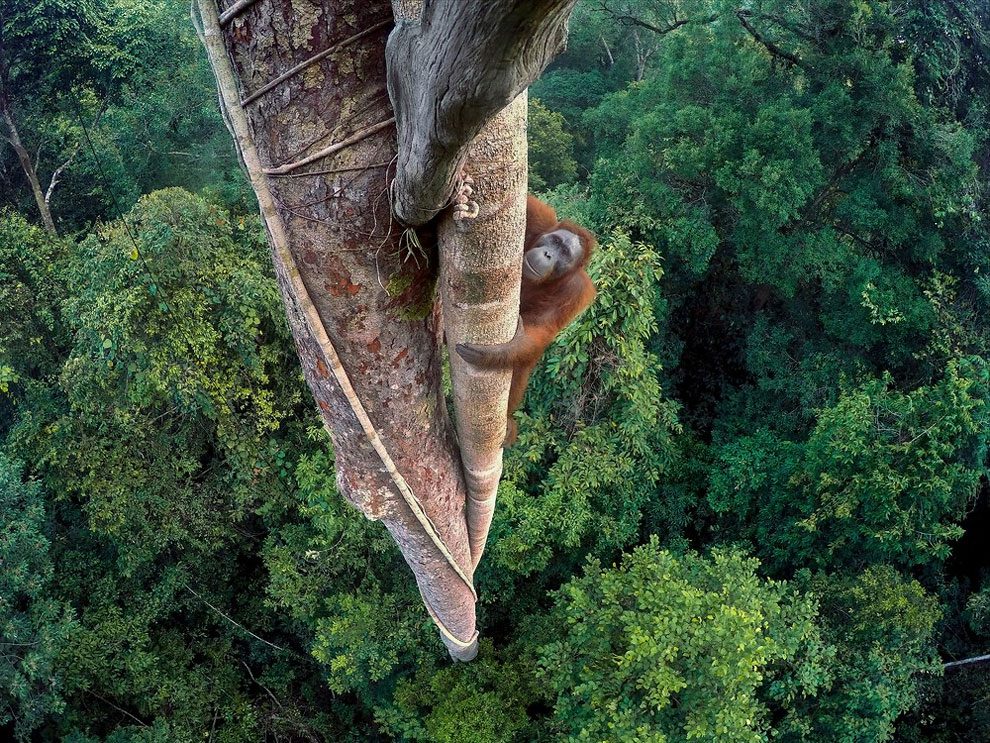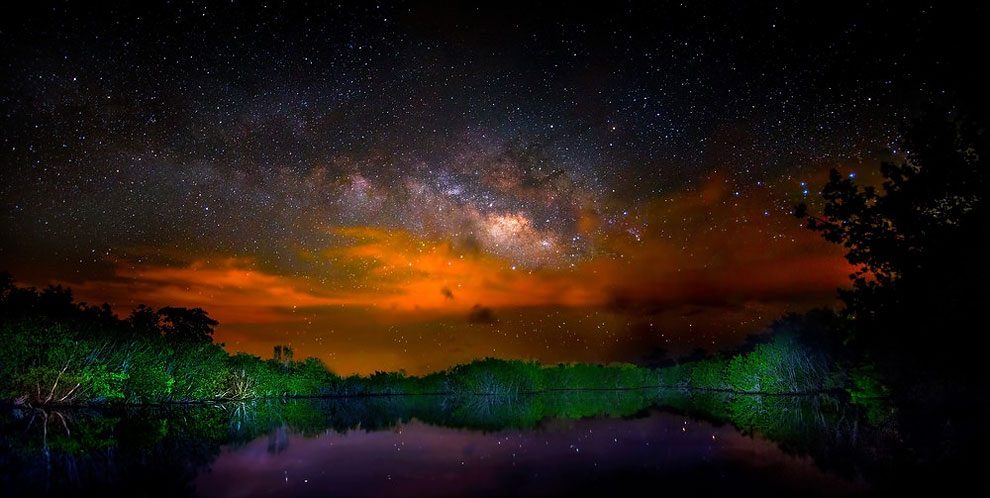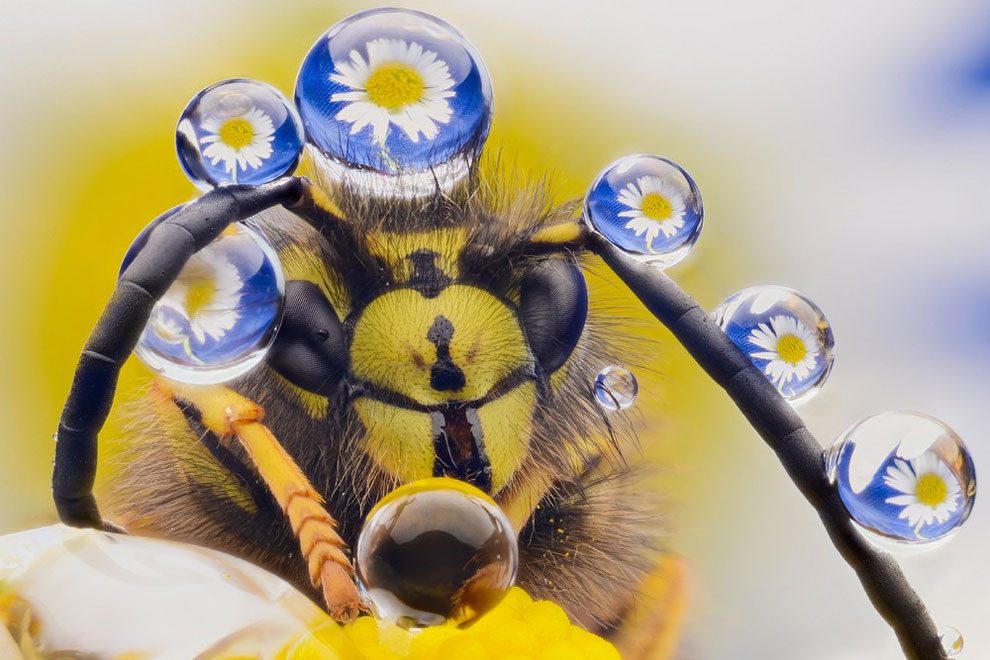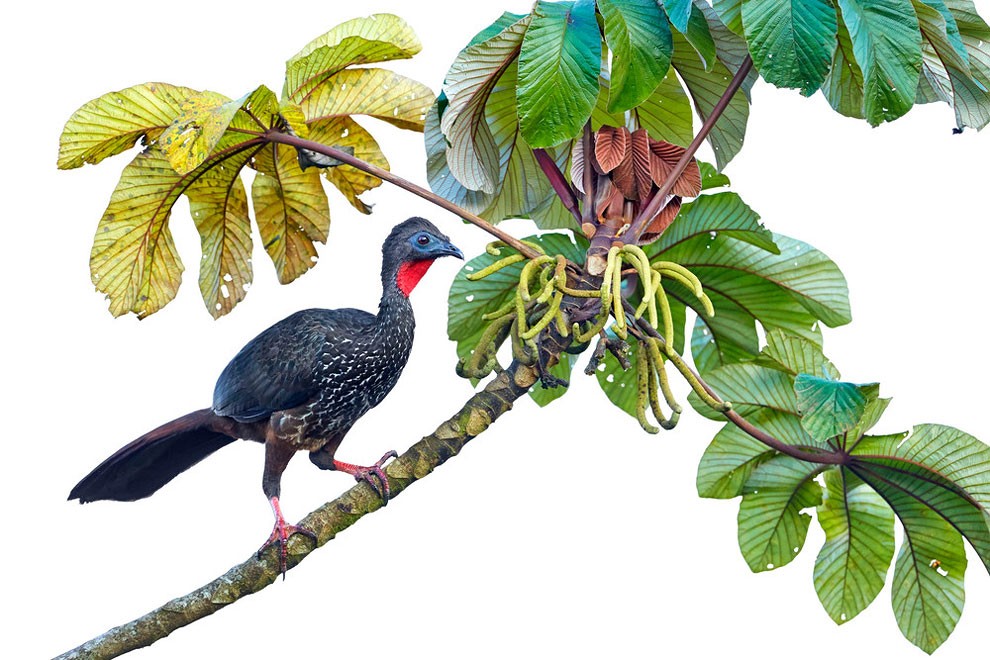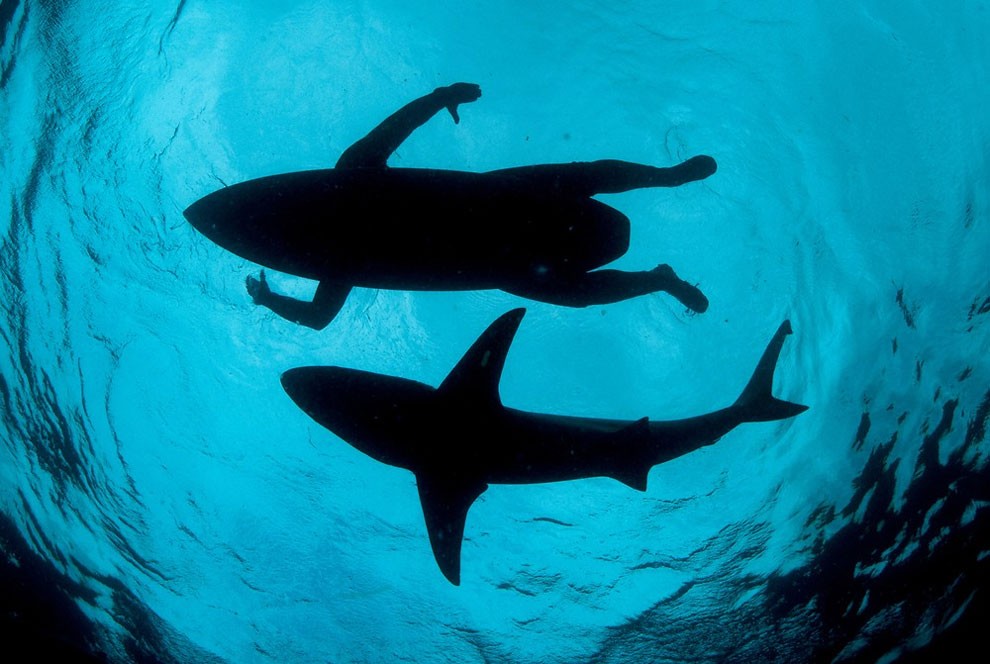BigPicture Wildlife Images Competition 2017 Winners
The fourth annual BigPicture Natural World Photography Competition aims to celebrate the diversity of life on Earth, and encourages people to protect and conserve it.
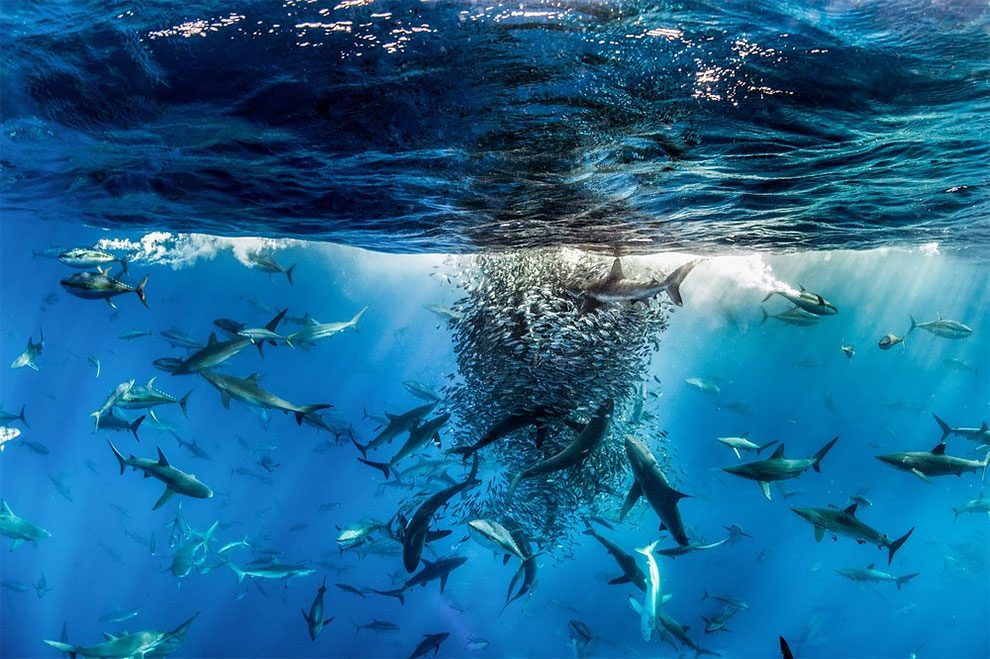
“Roundup at Revillagigedo”. Aquatic Life Finalist. The nutrient and plankton rich waters of the Revillagigedo Archipelago, Mexico, create an unusually healthy ecosystem. Here over 1,000 top predators, including a variety of sharks and yellowfin tuna, gather to eat. (Photo by Ralph Pace/BigPicture Natural World Photography Competition 2017) Continue reading »
Australian Native Wildlife: The National Geographic Photographer Creates A Photo Archive Of Biodiversity Around The World.
The National Geographic Photo Ark is a travelling exhibition of photographer Joel Sartore’s quest to create a photo archive of biodiversity around the world. So far, Sartore has captured studio portraits of more than 6,000 species – a number that he hopes to double.
On 1 July, the ark will open at Melbourne zoo – the first time it has been exhibited in the southern hemisphere. More than 50 portraits will be on display, including many of Australian endangered animals being protected by programs at the zoo itself. These captions have been edited from text supplied by Melbourne zoo.
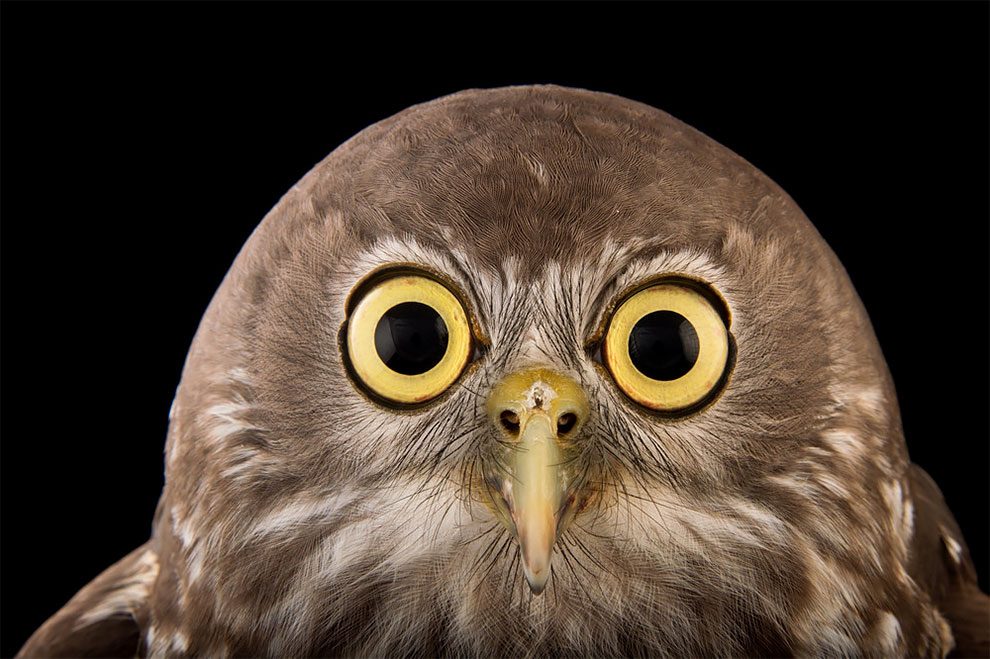
Joel Sartore/National Geographic Photo Ark/The Guardian
Barking owl. So-named because its call sounds like a barking dog, these birds are native to Australia, Indonesia and Papua New Guinea. In Victoria they are listed as an endangered species, and in 2003 there were estimated to be fewer than 50 breeding pairs.The main threat to the species in Victoria is loss of habitat, especially large trees with hollows in which they can nest and on which many of their prey depend. Apart from a bark, they may utter a chilling scream when they feel threatened. Continue reading »
Wildlife Photographer Of The Year 2017 – Unforgettable Animal Behaviour
From basking gharial to stampeding muskoxen, these images from the Wildlife Photographer of the Year competition have been selected for a Natural History Museum book, Unforgettable Behaviour, and offer a unique glimpse into hidden worlds of animal survival and joy
Respect, Kronotsky nature reserve, Russia.

The photographer’s cat, Ryska – her name means little lynx in Russian – stands outside their cabin and with aggressive posturing warns off a fox. In winter, foxes would regularly visit the cabin searching for food. If one peered in at the window, possible when the snow was deep, Ryska would sit on the other side, fur raised, and growl. When outside, she would hold her ground. The foxes were not always frightened and so encounters could be a sort of dance. (Photo by Igor Shpilenok/Unforgettable Behaviour/NHM) Continue reading »
10 Finalists Of The World Wildlife Day Photography Competition
Kingfisher by Gàbor Li, 17, from Hungary:
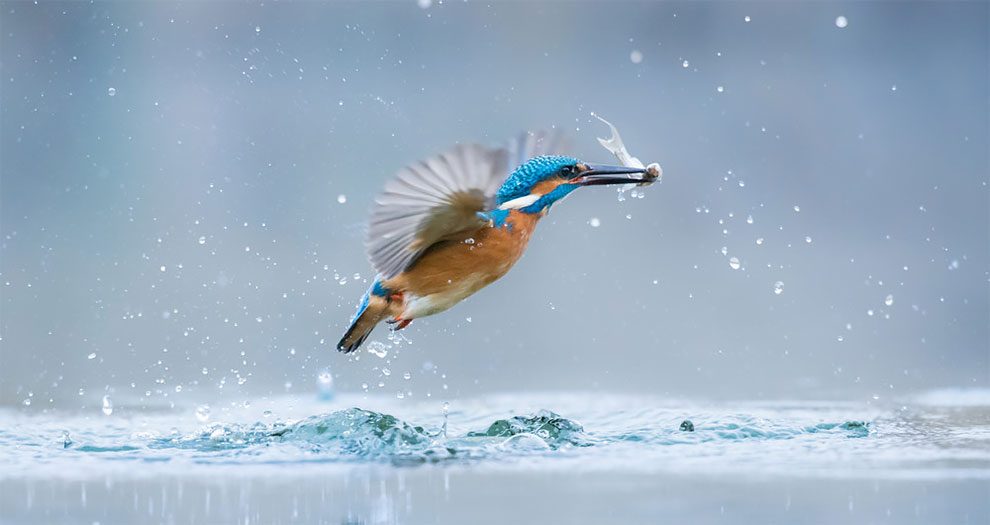
Gabor Li/WWD2017
Ten finalists capture the theme of “through young eyes” in this young photographers’ competition that aims to engage youth around the world in wildlife conservation. Continue reading »
This Guy Shoots Awesome Wildlife Photography… From His Bedroom
Egyptian visual artist Amr Elshamy takes what looks like awesome underwater snaps, but in actual fact, everything is done from his room. Take a look at some of the stuff Amr creates below, as well as some behind-the-scenes shots. Continue reading »
2016 Wildlife Photographer Of The Year Winners
“Entwined Lives”. Tim Laman, US Winner, Wildlife photographer of the year. A young male orangutan makes the 30-metre climb up the thickest root of the strangler fig high above the canopy in Gunung Palung national park, one of the few protected orangutan strongholds in Indonesian Borneo. Laman had to do three days of climbing to position several GoPro cameras that he could trigger remotely. This shot was the one he had long visualised, looking down on the orangutan within its forest home. (Photo by Tim Laman/2016 Wildlife Photographer of the Year) Continue reading »
Comedy Wildlife Photo Awards 2016 Shortlist

A bear appears to have wings growing from it’s head in a photo taken by Adam Parsons, September, 2015. (Photo by Adam Parsons/Barcroft Images/Comedy Wildlife Photography Awards 2016) Continue reading »
Wildlife And Stars In Stunning Photographs By Mark Andrew Thomas
Brush fires in Everglades National Park, Florida make for a dramatic Milky Way in this panorama. A photographer set out to inspire awe in nature’s wonders through the tropical wetlands of Florida. Continue reading »
Hilarious Winners Of The 2016 Comedy Wildlife Photography Awards
The first-ever comedy photo awards for animals in the wild was founded by wildlife photographer Paul Joynson-Hicks.
A macro photograph of honey bee tentacles, titled, Just putting on my pearls before I hit the town, pictured by Murray Mcculloch for the Comedy Wildlife Photo Awards 2016, July 2015. (Photo by Murray Mcculloch/Barcroft Images/Comedy Wildlife Photo Awards) Continue reading »
British Wildlife Photography Awards 2016 Winners

Animal portraits winner: Jamie Mina, “Contemplation”, Mountain hare, Tomatin, Inverness, Scotland. (Photo by Jamie Mina/British Wildlife Photography Awards 2016) Continue reading »
2016 UK Wildlife Photographer Of The Year Finalists
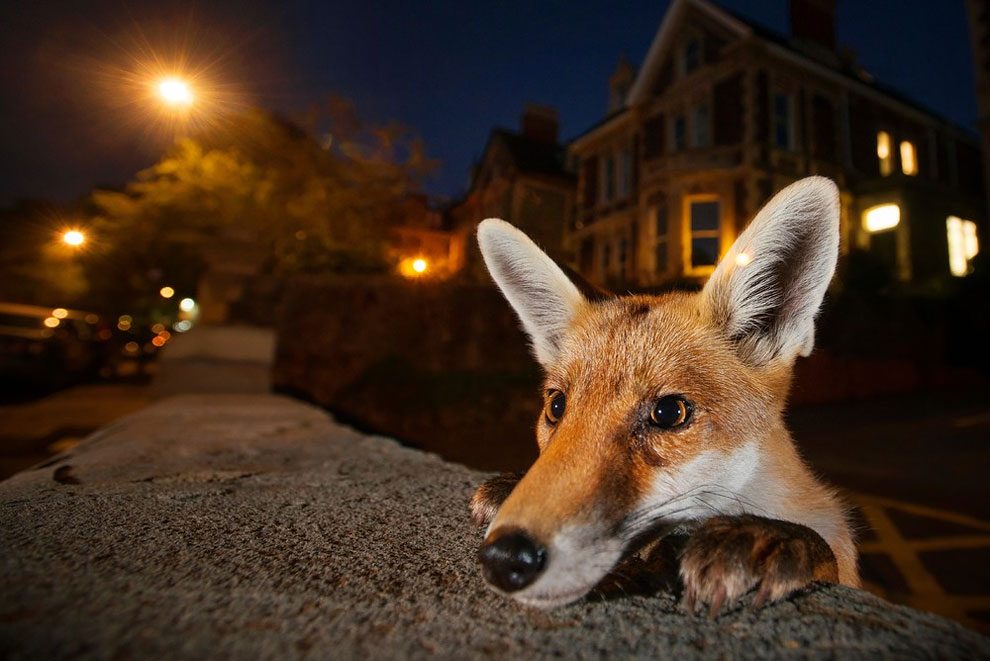
Nosy neighbour by Sam Hobson, UK. Sam knew exactly who to expect when he set his camera on the wall one summer’s evening in a suburban street in Bristol, the UK’s famous fox city. He wanted to capture the inquisitive nature of the urban red fox in a way that would pique the curiosity of its human neighbours about the wildlife around them. (Photo by Sam Hobson/2016 Wildlife Photographer of the Year) Continue reading »
GDT European Wildlife Photographer of the Year 2015
Highly commended birds : Crested guan by Tim Hunt (UK). ‘This photo shows a crested guan in the cloud forests of Costa Rica as it pauses while foraging on a lone branch. Due to the clouds that are so typical for this habitat, I could often only photograph the bird’s silhouette against a grey sky. But then, for a short moment only, the sun broke through the clouds, and I overexposed the image by over two stops in order to blow out the background and allow this beautifully marked bird to stand out’. (Photo by Tim Hunt/GDT European Wildlife Photographer of the Year 2015)
Continue reading »
Wildlife Photographer Of The Year 2015 Finalists
The shark surfer by Thomas P. Peschak. Finalist, Photojournalism award: single image. Many sharks are found at Aliwal Shoal near Durban, South Africa, making it the perfect place to test a prototype surfboard with an electromagnetic shark deterrent. (Photo by Thomas P. Peschak/Wildlife Photographer of the Year 2015)
Continue reading »
Hilarious Pictures from the Comedy Wildlife Photography Awards
More than 1,500 snappers submitted their most hilarious pictures of all creatures great and small, and now 45 have made the cut. From drunken-eyed owls to embarrassed chipmunks and laughing goats – the finalists in the Comedy Wildlife Photography Awards are guaranteed to raise a smile.

‘Dancing sifaka’. (Photo by Alison Buttigieg/Comedy Wildlife Photography Awards/Mercury Press) Continue reading »
Wildlife Photographer Of The Year 2015: First Glimpse Of Finalists’ Images
Wrestling Komodo dragons, a shark-repellent surfboard and a concerned gorilla are among the images captured on camera by finalists in the Wildlife Photographer of the Year 2015 competition. The competition attracted over 42,000 entries from both professionals and amateurs from 96 countries.
The winning images will be announced on 13 October, and an exhibition of the 100 shortlisted and winning images opens on 16 October at the Natural History Museum in London. These 100 images will also be part of an international tour spanning six continents, allowing millions of people to marvel at the beauty and variety of the natural world.
IBTimesUK presents a first look at ten of the finalists. A full gallery of winners will be published as soon as they are announced.
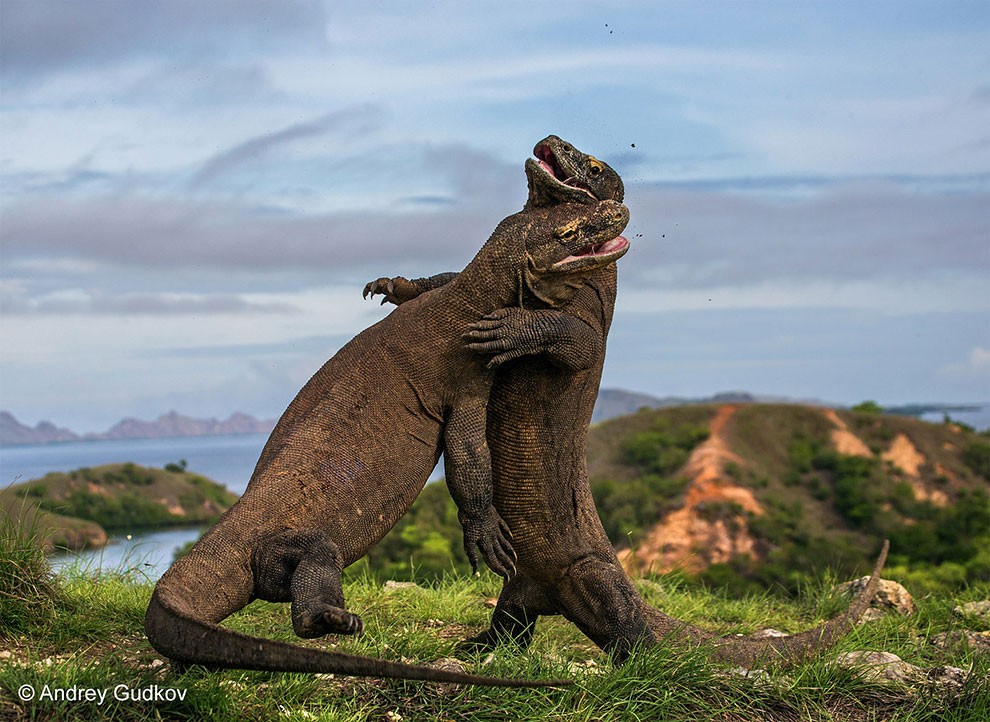
Finalist, Amphibians & Reptiles: Komodo Judo by Andrey Gudkov, Russia. The fight was fast and unexpected. Andrey had been to Indonesia’s Komodo National Park many times before, hoping to witness a battle between male Komodo dragons – the largest lizards in the world, measuring up to 2.5 metres (8 feet) long. Continue reading »
Unusual Hybrid Animal And Wildlife Murals Painted By Alexis Diaz

Puerto Rican artist Alexis Diaz brings textures and patterns reminiscent of traditional engraving techniques to his murals of phantasmagorical creatures using only a paintbrush. Twisting tentacles, strange fusions of anatomy, beings wrapped in plants, all rendered atop colorful gradients create an unmistakable style Diaz has become famous for. Continue reading »
The Veolia Environnement Wildlife Photographer of the Year Competition
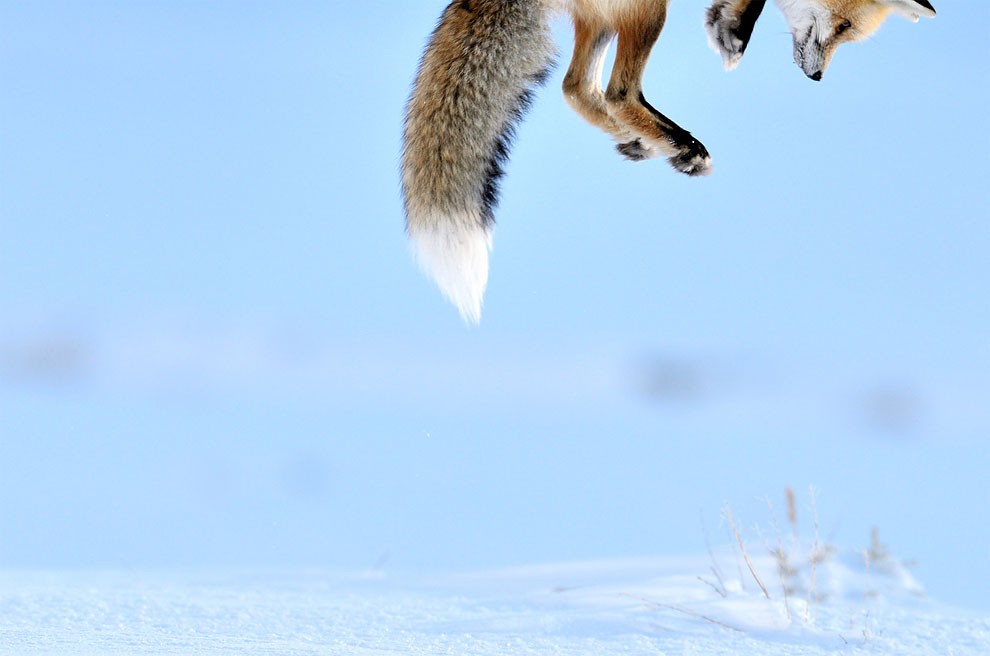
Commended. Photographer Richard Peters sat in his car and from a distance watched the fox hunting, just enjoying the performance. He was in Yellowstone National Park, in Wyoming, and there was snow on the ground. The fox was listening for rodents under the snow, then leaping high to pounce down on the unsuspecting prey. It was too far away to photograph, and so when it disappeared and suddenly reappeared, on a snow bank level with the car window, Richard was taken by surprise. “It was already in pounce position, and I barely had time to lift the camera before it leapt up into the air almost clean out of my field of view. I managed to get a sequence of the leap, but I love this quirky image best, which gives a real sense of just how high these wonderful animals can jump”. (Photo by Richard Peters/Veolia Environnement Wildlife Photographer)
Continue reading »
Best Wildlife Photos of 2014
The winners of the 50th Wildlife Photographer of the Year Competition have been announced by London’s Natural History Museum.

Stinger in the sun by Carlos Perez Naval (Spain)
Aware of Carlos’s presence, the common yellow scorpion is flourishing its sting as a warning. Carlos had found it basking on a flat stone in a rocky area near his home in Torralba de los Sisones, northeast Spain — also a place that he goes to look for reptiles. The late afternoon sun was casting such a lovely glow over the scene that Carlos decided to experiment with a double exposure (his first ever) so he could include the sun. He started with the background, using a fast speed so as not to overexpose the sun, and then shot the scorpion, using a low flash. But he had to change lenses (he used his zoom for the sun), which is when the scorpion noticed the movement and raised its tail. Carlos then had to wait for it to settle before taking his close-up, with the last rays of the sun lighting up its body.
Continue reading »
India Destroys Stockpile of Illegal Wildlife Parts
Indian authorities set fire Sunday to a stockpile of tiger skins, elephant tusks, rhino horns and other illegal animal parts in an effort to discourage wildlife smuggling in South Asia. Animal poaching and smuggling have flourished in India, driven by black market demand from China, Vietnam and other Southeast Asian countries where many believe exotic animal parts have medicinal or aphrodisiacal properties. In most cases, there is no scientific evidence that they do. Indian Environment Minister Prakash Javadekar loaded more than 42,000 illegal animal parts into a large, blazing oven at the Delhi Zoo. The parts included tiger and leopard pelts, reptile skins, rhino horns and shawls made from endangered Tibetan antelope called shahtoosh. Wildlife officials and members of the media crammed into the small room at the zoo to witness the inferno.

Indian authorities hold a tiger skin as they set fire to a stockpile of illegal wildlife parts at the Delhi Zoo in New Delhi, India, Sunday, November 2, 2014. A stockpile of tiger skins, elephant tusks, rhino horns and other illegal animal parts were burned Sunday in an effort to discourage wildlife smuggling in South Asia. (Photo by Tsering Topgyal/AP Photo)
Continue reading »
British Wildlife Photography Awards 2014 Winners

The British Wildlife Photography Awards winners have been revealed, with Lee Acaster from Suffolk taking home the top prize for his shot of a Graylag Goose in London. Acaster, who received £5,000, photographed the animal against an ominous London skyline, with The Shard clearly visible in the background. Here: “Urban Tourist (Graylag Goose)”. Urban category and overall winner. (Photo by Lee Acaster/British Wildlife Photography Awards 2014)
Continue reading »
Fantastic Wave Rock in Hyden Wildlife Park, Australia
Wave Rock is a natural rock formation that is shaped like a tall breaking ocean wave. The “wave” is about 14 m (46 ft) high and around 110 m (360 ft) long. It forms the north side of a solitary hill, which is known as “Hyden Rock”. Continue reading »
Stop Illegal Wildlife Trade
WWF is leading a global campaign to stop wildlife crime. Illegal wildlife trade has exploded to meet increasing demand for elephant ivory, rhino horns, and tiger products, particularly in Asia. Controlled by dangerous crime syndicates, wildlife is trafficked much like drugs or weapons. Wildlife criminals often operate with impunity, making the trade a low-risk/high-profit business. Today, it is the fifth most profitable illicit trade in the world, estimated at up to $10 billion annually. Continue reading »
‘Wildlife Selfies’ by National Geographic
National Geographic asked Heads agency in Sao Paulo in Brazil, to make posters of animals doing selfies with their mobile phones in front of their bedroom, elevator and bathroom’s mirrors. A funny campaign leaded by Silvio Medeiros and Pedro Galdi. Continue reading »
Wildlife
A silhouette of short-eared owl (Asio flammeus) in flight at dusk, Worlaby Carrs, Lincolnshire. This image is part of a new outdoor street-gallery exhibition that has been launched on the South Bank of the River Thames in London, documenting the best of the 2020VISION wildlife project. (REX FEATURES)
Wildlife Photographer of the Year 2011
Tiny warm-up
Photographer: Cyril Ruoso
Folded up into a fur-ball, this youngster is warming its extremities in between bouts of play and feeding. He is part of a band of about 70 or so Qinling golden snub-nosed monkeys living high up in Chinas Qinling Mountains, surviving on lichen, leaves, bark and buds. If mother is not around to cuddle up to, then sitting like this is the best way to keep warm in the extreme winter cold, says Cyril. Sitting apart from its mother also makes such a little monkey vulnerable to attack by goshawks or golden eagles. The species is endangered, and this subspecies probably numbers no more than about 4000. The total population of all races of golden snub-nosed monkeys is only 8000-20,000. Continue reading »

